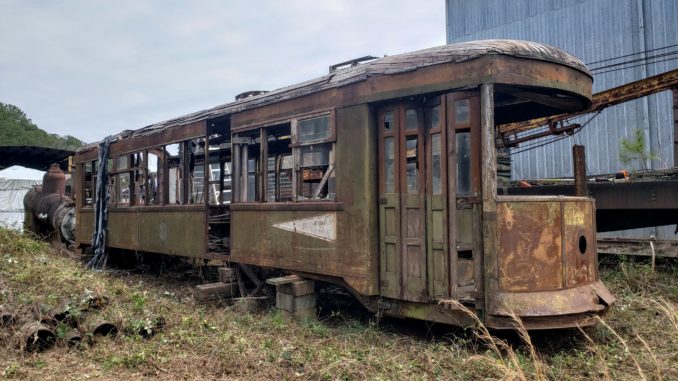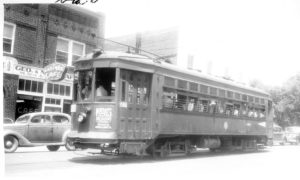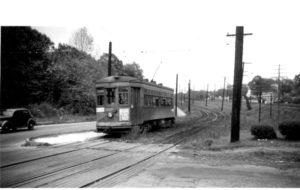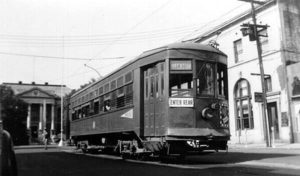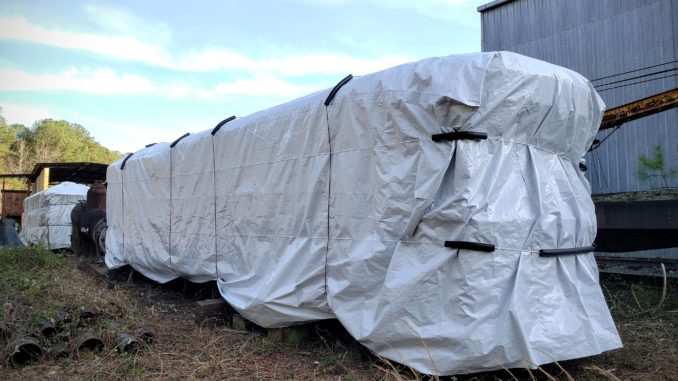In the first half of the twentieth century travel in cities usually meant taking transit, oftentimes by streetcar, or as it was colloquially known, the “trolley.” In Atlanta the trolley system was operated by the Georgia Power Company. Georgia Power traces its roots to the “Second Battle of Atlanta” between trolley monopolies that fought to control the streetcar system in Atlanta. Joel Hurt’s Atlanta Consolidated Streetcar Railway Company and the Atlanta Rapid Transit Company headed by Henry Atkinson controlled almost all of the lines in the City, with competing parallel lines sometimes only a block apart.
Samuel Inman helped broker a merger of the feuding interests in 1902 and Hurt retired from the trolley business. One of the compromises in order to gain required approval from all of the jurisdictions for the merger included promising the City of Decatur a perpetual 5¢ fare in return for abandoning the North Decatur Line, redundant to the other two lines serving Decatur. Georgia Power made the same deal with College Park and this would come to haunt the company when several years later fares went up in Atlanta to 7¢ but not on the lines to the suburbs. As a result service to Decatur was different than other lines, since it charged only 5¢ and was required to operate two man cars with conductors. To help the public recognize the trolleys, they were painted with large yellow triangles and the text “Enter Rear” (where the conductor collected fares) on the front and sides. The special fare to Decatur would last until conversion of the system to trackless trolleybus and the reinstatement of the third North Decatur Line to Decatur. Elimination of the legal requirement for a minimum of three lines to Decatur (or else the 5¢ fare would be reinstated) finally was eliminated once MARTA took over operation of the transit system in 1972.
In the early 1920’s Georgia Power was upgrading and modernizing the streetcar system in Atlanta. Streetcar #269 was built by the Cincinnati Car Company as part of a series of 14 trolleys delivered to Georgia Power in 1921 numbered #267-280. The cars were set up for two man operation and painted for the Decatur line and the 5¢ fare. Since the cars had this special configuration they lasted until the end of streetcar service to Decatur on the Main Decatur line on November 13, 1948.
Streetcar #269 in the collection of the Southeastern Railway Museum is the only known survivor of a Decatur Streetcar and one of only a handful of surviving Georgia Power streetcars. It was sold after the end of streetcar service for use as a house in Hiram Georgia, where it was discovered by SRM volunteers in February 2002 and recovered to the museum later that year. It has been in storage behind Building #3 ever since, pending a display and restoration plan.

